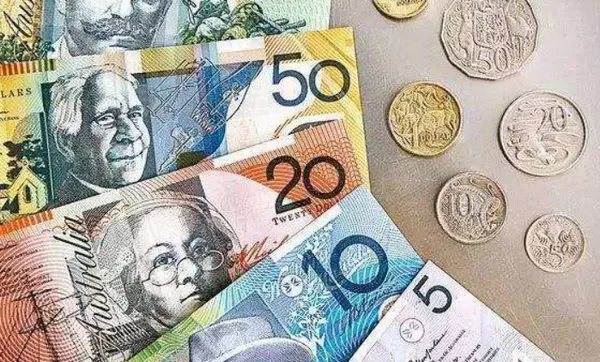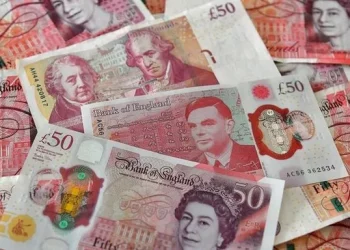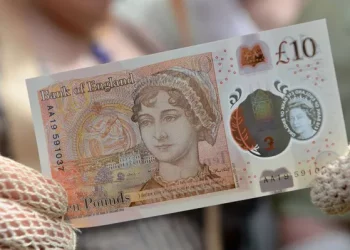The world of foreign exchange (Forex or FX) can seem daunting to the uninitiated, especially when trying to understand how currency exchange works. One of the most common questions that arise in this domain is how much a certain amount of one currency is worth in another. For instance, many individuals, travelers, and businesses often ask, “How much is 1000 Australian Dollars (AUD) in American Dollars (USD)?”
To address this, we need to explore various elements of currency exchange, the role of exchange rates, and how factors like geopolitical events, economic indicators, and central bank policies influence the value of one currency relative to another. Additionally, we will explore how exchange rates fluctuate, and why it is essential to keep an eye on market trends when making international transactions.
In this article, we will break down the process in simple terms, providing a comprehensive understanding of how the exchange rate works between the Australian Dollar and the U.S. Dollar. Let’s start with the basics.
Understanding Currency Exchange Rates
A currency exchange rate is the price of one currency in terms of another. In our case, the exchange rate between the Australian Dollar (AUD) and the U.S. Dollar (USD) tells us how much one Australian Dollar is worth in U.S. Dollars.
For example, if the exchange rate between the AUD and USD is 0.67, this means that one Australian Dollar is worth 0.67 U.S. Dollars. If you are in Australia and need to exchange 1000 AUD, you would receive 670 USD.
Exchange rates are dynamic, meaning they change constantly based on various factors. These fluctuations happen in real-time on the forex market, a marketplace where currencies are bought and sold. Understanding how these rates are determined is key to understanding why the value of the Australian Dollar and the U.S. Dollar can change over time.
How Exchange Rates Are Determined
Several factors influence exchange rates, and it is essential to grasp some of these fundamental economic concepts.
1. Interest Rates
Central banks play a critical role in setting interest rates, and these rates impact the currency’s value. If the Reserve Bank of Australia (RBA) raises its interest rates, it may attract foreign capital because higher interest rates offer better returns on investments. Similarly, the U.S. Federal Reserve’s decisions on interest rates can affect the USD. When one country’s central bank raises its interest rates while another’s remains unchanged, investors may shift their capital into the higher-yielding currency, driving up its value.
2. Inflation Rates
Inflation plays a role in the purchasing power of a currency. Generally, if inflation is higher in one country compared to another, its currency will lose value over time. A country with low inflation tends to have a more stable and stronger currency, whereas a country with high inflation may see a depreciation in its currency’s value.
3. Economic Indicators
Economic reports such as GDP (Gross Domestic Product), employment rates, trade balances, and manufacturing activity all influence exchange rates. Strong economic data tends to strengthen a country’s currency because it suggests the economy is healthy and productive. Conversely, weak economic data can lead to a weaker currency.
4. Geopolitical Events
Political instability, elections, or international conflicts can also create uncertainty in the markets, leading to currency fluctuations. When there is a sense of instability or risk, investors may move their money into currencies perceived as “safe havens,” such as the U.S. Dollar. This shift in sentiment can cause the Australian Dollar to weaken relative to the U.S. Dollar.
5. Market Sentiment
At its core, foreign exchange trading is driven by human emotions and perceptions. Currency traders speculate on future trends based on news, geopolitical events, and economic reports, influencing supply and demand for specific currencies. If traders believe that the AUD will strengthen against the USD, they may buy AUD, pushing up its value. The opposite holds true if they anticipate the Australian Dollar will weaken.
The AUD/USD Exchange Rate in Context
In the past few years, the Australian Dollar has fluctuated against the U.S. Dollar. This volatility has affected businesses, investors, and individuals who need to convert their Australian Dollars into U.S. Dollars. Exchange rates are not fixed; rather, they change continuously as supply and demand fluctuate in the market.
To understand how much $1000 Australian Dollars is worth in American Dollars, we need to look at the current exchange rate. For example, if the exchange rate between AUD and USD is 0.67, then 1000 AUD would be worth 670 USD. However, if the exchange rate shifts to 0.75, the same 1000 AUD would be worth 750 USD. Therefore, the value of the currency is always in flux, and the conversion depends on the rate at the moment of the transaction.
Factors That Can Affect Your Exchange Rate
It is essential to recognize that when you exchange AUD for USD, the exchange rate you receive may not be exactly the same as the one quoted on the financial markets. Several additional factors can affect the rate you are offered:
1. Forex Brokers and Currency Providers
The price you get when exchanging currencies may differ from the market rate due to the margins applied by forex brokers or currency exchange providers. They typically add a small fee or spread to the base exchange rate in order to profit from the transaction. It is advisable to shop around to find the best exchange rates when converting large amounts of currency.
2. Transaction Fees
Banks, currency exchange providers, and online platforms often charge fees for converting currencies. These fees can vary depending on the provider, the amount being exchanged, and the method of transaction. It is essential to factor in these costs when determining how much you will actually receive after the exchange.
3. Online Platforms
In today’s digital world, there are various online platforms, such as PayPal, Revolut, or Wise (formerly TransferWise), that offer currency exchange services. These platforms may offer better rates than traditional banks, but it’s crucial to carefully examine their fees and exchange rates to ensure you’re getting a good deal.
How to Exchange $1000 AUD to USD
Now that we understand how the exchange rate works, let’s consider the practical steps involved in converting your Australian Dollars to U.S. Dollars. There are several ways to exchange currencies, each with its own advantages and disadvantages.
1. Banks and Financial Institutions
The most common way to exchange currency is through banks and financial institutions. While banks may offer the convenience of converting currencies, they typically provide less favorable exchange rates compared to other providers. Additionally, banks may charge higher transaction fees, especially for international transfers. It’s always worth checking different banks to compare rates before exchanging currency.
2. Currency Exchange Counters
Currency exchange counters, often found in airports or popular tourist areas, allow travelers to exchange their AUD for USD quickly. However, these counters often provide less favorable exchange rates due to the premium placed on convenience. It’s advisable to use such services only when necessary.
3. Online Money Transfer Services
As mentioned earlier, services like PayPal, Wise, and Revolut can be used to send money abroad or convert currencies. These services often offer better exchange rates than banks, and their fees are generally lower. Some platforms even allow you to hold multiple currencies in digital wallets, making it easier to convert money when needed.
4. Foreign Exchange Brokers
For larger sums of money, foreign exchange brokers may provide competitive rates. These brokers specialize in currency exchange and can offer lower spreads than banks or other providers. Forex brokers cater to individuals or businesses that need to convert large sums of currency, and many offer specialized platforms for managing foreign exchange.
How Exchange Rates Impact Businesses and Investments
For businesses operating internationally, exchange rates have a direct impact on profitability. Companies that import goods from other countries or export their products abroad are affected by currency fluctuations. A strong Australian Dollar means that Australian exporters may receive less revenue when converting foreign sales back into AUD. Conversely, a weak AUD benefits exporters but makes imports more expensive.
Similarly, investors who hold assets in foreign currencies must carefully monitor exchange rates. If you hold investments in U.S. assets, fluctuations in the AUD/USD exchange rate can affect the value of your holdings when converted back to AUD. Investors often use hedging strategies to mitigate currency risk and reduce the impact of unfavorable exchange rate movements.
Conclusion
The value of 1000 Australian Dollars in American Dollars depends on the current exchange rate, which fluctuates daily. As we’ve seen, the exchange rate is influenced by a variety of factors, including interest rates, inflation, economic performance, and geopolitical events. When exchanging currencies, individuals and businesses must account for transaction fees, the provider’s margin, and the current market conditions.
In practice, if the exchange rate between the AUD and USD is 0.67, 1000 AUD will be worth 670 USD. However, if the rate changes to 0.75, the same 1000 AUD will convert to 750 USD. Given the volatility of foreign exchange rates, it is essential to monitor these fluctuations, particularly if you are engaged in international business or investing.
For individuals traveling or conducting international transactions, it’s important to use a reliable exchange service and be aware of any fees or charges that may apply. The forex market is dynamic and offers both opportunities and risks. By understanding how exchange rates work, you can make informed decisions and get the most value from your currency exchanges.
Related Topics:

























